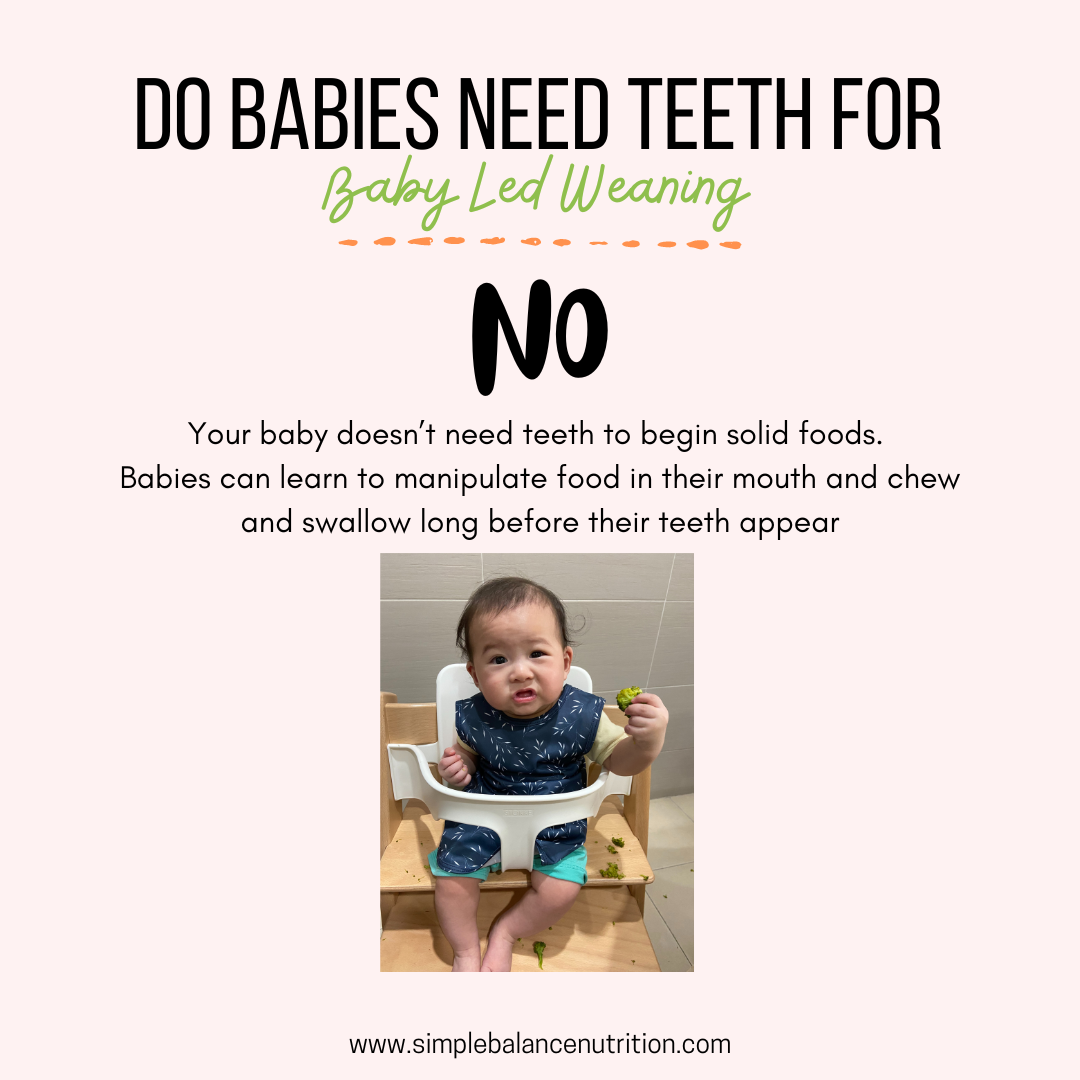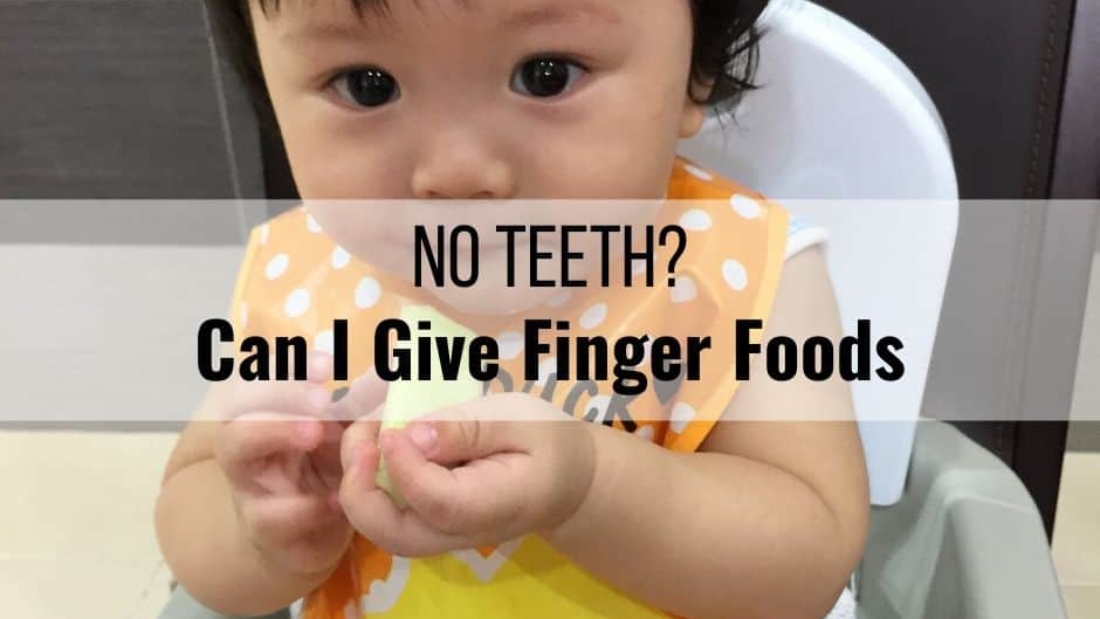According to the new infant feeding guidelines, it is now recommended that babies be introduced to a variety of textures within the first few months of starting solids. Spoon-feeding purees is no longer the one and only way. In fact, you can jump right in with soft finger foods (Baby Led Weaning) if you feel comfortable with it.
As a dietitian, I’m often asked this question:
My baby doesn’t have any teeth yet? Can I give him finger foods?
ANSWER: YES !!!
BABIES CHEW WITH THEIR GUMS
Babies can enjoy soft finger foods before they have teeth. They can mash foods into smaller pieces using their gums.

Finger foods are small pieces of food that your baby can pick up and eat easily. Introducing finger foods early, soon after starting solids, helps your baby get used to different food textures, improve coordination and encourages self-feeding. These are important feeding skills. Most babies are ready for finger foods by 6-7 months, some babies start right at 6 months (BLW). Many won’t have teeth (or very many teeth) by this age.
You baby is likely ready for finger foods when you see the following:
- He can sit upright with minimal support.
- He is very interested in watching people eat and the food on your plate.
- He can eat thicker purees (the consistency of mashed potatoes).
- He can bring food to his mouth using his hand.
SAFE FINGER FOOD IDEAS FOR BABIES
Choose soft foods that baby can grasp easily with fingers or hands. Offer your baby different kinds of finger foods from all 4 food groups.
Vegetables (soft cooked) and Fruits
- Soft cooked vegetable (grating, cut into bite-sized pieces or strips): Carrot, broccoli, green beans, yam, sweet potato, potato, cauliflower, zucchini, squash
- Soft, ripe, peeled fruit (grating, cut into bite-size pieces or strips): apple, pears, ripe slices of kiwi, mango, papaya, melon, cantaloupe, banana, fresh or canned unseated peaches, ripe avocado, oranges, thawed frozen fruit and berries
- Seedless grapes don’t have to peel but should cut into four bite-size pieces
Grain Products
- Whole wheat toast, bagels or buns (cut into strips)
- Pieces of roti or tortilla
- Unsweetened oat ring cereal like Cheerios
- Cooked pasta
- Rice balls
Milk Products
- Grated or small cubes of pasteurized cheese
Meat & Meat Alternatives (soft and well cooked)
- Ground meat or poultry
- Small (pea sized) pieces of tender meat or poultry
- Fish (de-bonded and flaked)
- Quartered meatballs
- Well cooked eggs (cut in to pieces)
- Small cooked beans (black beans and navy beans)
- Larger cooked beans (kidney beans – cut in half)
- Tofu
- Smooth nut or seed butter (spread thinly on a cracker or bread to make it easier to swallow)
Mealtimes will be messy and slow at first. This is part of learning how to eat.
FOODS TO AVOID
Hard and sticky foods can cause choking and should be avoided.
- Whole nuts or seeds
- Raisins
- Popcorn
- Gum
- Hard candies or jellybeans
No HONEY during baby’s first year. Honey may cause botulism, a type of food poisoning, that could make your baby sick.
BOTTOM LINE
It is amazing to watch what little ones can handle with their gum. So go ahead and offer finger food versions of a wide variety of food that your family eats. I enjoy watching my boy, Aiden, discovers the amazing variety of tastes and textures that food comes in.


Leave A Comment